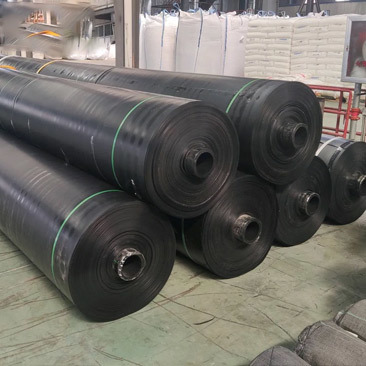Understanding Geomembrane Liners: Essential Insights for Construction and Landscaping
Release time:
2025-09-19
Geomembrane liners are impermeable membranes made from synthetic materials, primarily utilized in various construction and landscaping applications. Their primary function is to serve as a barrier against water and other fluids, preventing leakage and contamination. These liners are widely employed in landfills, ponds, reservoirs, and other areas where fluid containment is crucial. Understanding t
Geomembrane liners are impermeable membranes made from synthetic materials, primarily utilized in various construction and landscaping applications. Their primary function is to serve as a barrier against water and other fluids, preventing leakage and contamination. These liners are widely employed in landfills, ponds, reservoirs, and other areas where fluid containment is crucial. Understanding the properties and benefits of geomembrane liners can significantly enhance the effectiveness of your construction projects.
One of the primary advantages of using geomembrane liners is their excellent impermeability. Constructed from high-density polyethylene (HDPE), low-density polyethylene (LDPE), or other synthetic materials, these liners effectively prevent the passage of liquids, ensuring that contaminants do not seep into the surrounding soil or groundwater. This property is particularly vital in applications such as waste containment, where maintaining environmental integrity is paramount.
In addition to their impermeability, geomembrane liners offer substantial durability and resistance to environmental factors. They can withstand extreme temperatures, UV radiation, and chemical exposure, making them ideal for long-term use in various climates and conditions. This durability not only extends the lifespan of the liners but also reduces the need for frequent replacements, ultimately saving time and costs during construction.
The versatility of geomembrane liners is another significant benefit. They can be tailored to meet specific project requirements, whether in thickness, size, or material composition. This adaptability allows for their use in a wide range of applications, including:
1. **Landfills:** To contain leachate and prevent contamination of the surrounding environment.
2. **Ponds and Reservoirs:** To ensure water retention and minimize evaporation losses.
3. **Mining Operations:** To manage tailings and prevent the escape of harmful substances.
4. **Agricultural Applications:** To maintain water quality in irrigation systems and prevent soil erosion.
Proper installation and maintenance of geomembrane liners are critical to their effectiveness. It is essential to ensure a seamless application to avoid any weaknesses or potential leaks. Regular inspections and maintenance are also necessary to address any wear and tear that may occur over time, particularly in high-stress environments.
In conclusion, geomembrane liners play a vital role in modern construction and landscaping projects by providing effective barriers against fluid movement and contamination. Their durability, versatility, and impermeability make them an indispensable material in various applications, ensuring environmental protection and project efficiency. Understanding these liners' fundamental properties and applications can help you make informed decisions when selecting materials for your upcoming projects.
One of the primary advantages of using geomembrane liners is their excellent impermeability. Constructed from high-density polyethylene (HDPE), low-density polyethylene (LDPE), or other synthetic materials, these liners effectively prevent the passage of liquids, ensuring that contaminants do not seep into the surrounding soil or groundwater. This property is particularly vital in applications such as waste containment, where maintaining environmental integrity is paramount.
In addition to their impermeability, geomembrane liners offer substantial durability and resistance to environmental factors. They can withstand extreme temperatures, UV radiation, and chemical exposure, making them ideal for long-term use in various climates and conditions. This durability not only extends the lifespan of the liners but also reduces the need for frequent replacements, ultimately saving time and costs during construction.
The versatility of geomembrane liners is another significant benefit. They can be tailored to meet specific project requirements, whether in thickness, size, or material composition. This adaptability allows for their use in a wide range of applications, including:
1. **Landfills:** To contain leachate and prevent contamination of the surrounding environment.
2. **Ponds and Reservoirs:** To ensure water retention and minimize evaporation losses.
3. **Mining Operations:** To manage tailings and prevent the escape of harmful substances.
4. **Agricultural Applications:** To maintain water quality in irrigation systems and prevent soil erosion.
Proper installation and maintenance of geomembrane liners are critical to their effectiveness. It is essential to ensure a seamless application to avoid any weaknesses or potential leaks. Regular inspections and maintenance are also necessary to address any wear and tear that may occur over time, particularly in high-stress environments.
In conclusion, geomembrane liners play a vital role in modern construction and landscaping projects by providing effective barriers against fluid movement and contamination. Their durability, versatility, and impermeability make them an indispensable material in various applications, ensuring environmental protection and project efficiency. Understanding these liners' fundamental properties and applications can help you make informed decisions when selecting materials for your upcoming projects.






